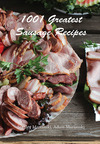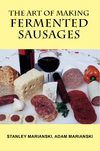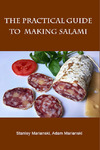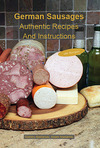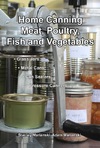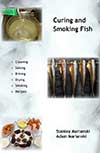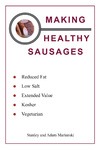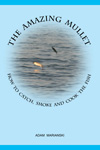Meats and Sausages
Ingredients for Sauerkraut
Salt. Use 2 -2.5% salt in relation to the weight of sliced cabbage. If using traditional covered containers, use 2.5%.
Carrots. Carrots supply sugar and carotene and are added at around 1.5% in relation to the weight of sliced cabbage. Use red colored carrots which signifies a solid amount of carotene, the core should have similar color to the skin.
Apples. Apples supply vitamins, sugar and many acids and minerals what contributes to a richer final flavor. They are added at around 1.5 - 3% in relation to the weight of sliced cabbage. Use mature, quality apples.
Cranberries. Cranberries supply vitamins, sugar and many acids and minerals what contributes to a richer final flavor. They are added at around 2 - 3% in relation to the weight of sliced cabbage.
Juniper. Juniper berries may not look much, but they contain up to 45% sugar and for this reason are added to cabbage that is low in sugar. In addition juniper berries bring this characteristic flavor what positively contributes to the complexity of the final sauerkraut flavor. Juniper is strong so it is added at 1% in relation to the weight of sliced cabbage.
Caraway Seed. Caraway is added at 0.1% in relation to the weight of sliced cabbage for its aroma. Caraway is often added to rye bread.
Dill Seed. Dill is added at 0.1% in relation to the weight of sliced cabbage for its aroma. Dill is often added to cucumber pickles.
Both, dill and caraway, contain aromatic oils which may create a thin film on the surface of sauerkraut. This will further prevent sauerkraut from contact with air which we always try to eliminate.



